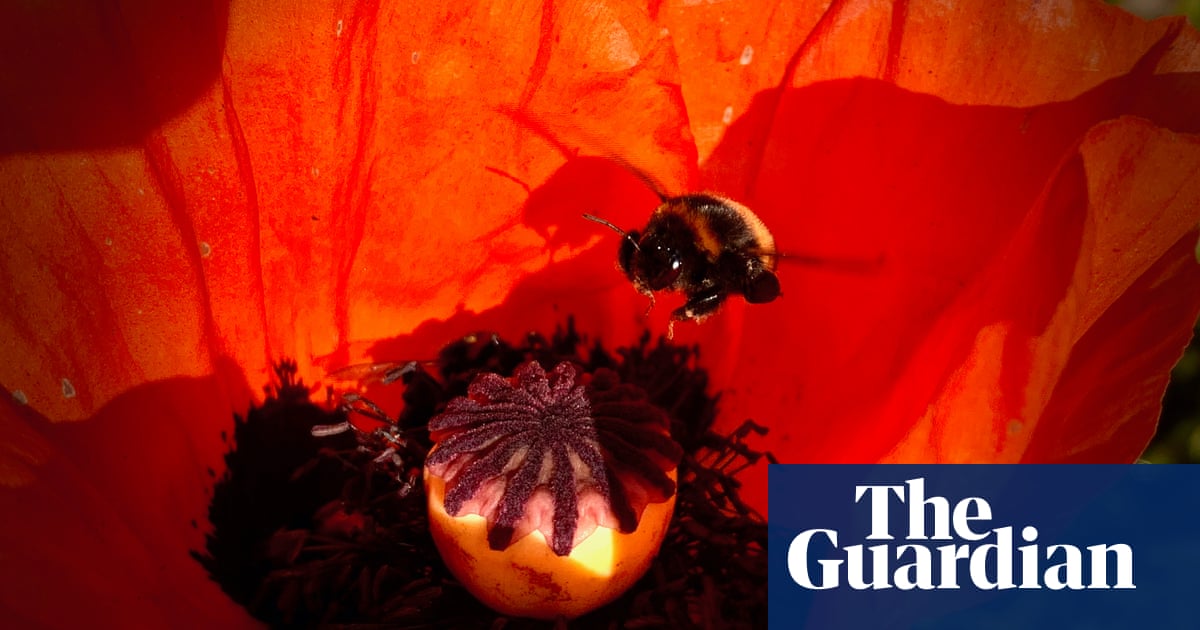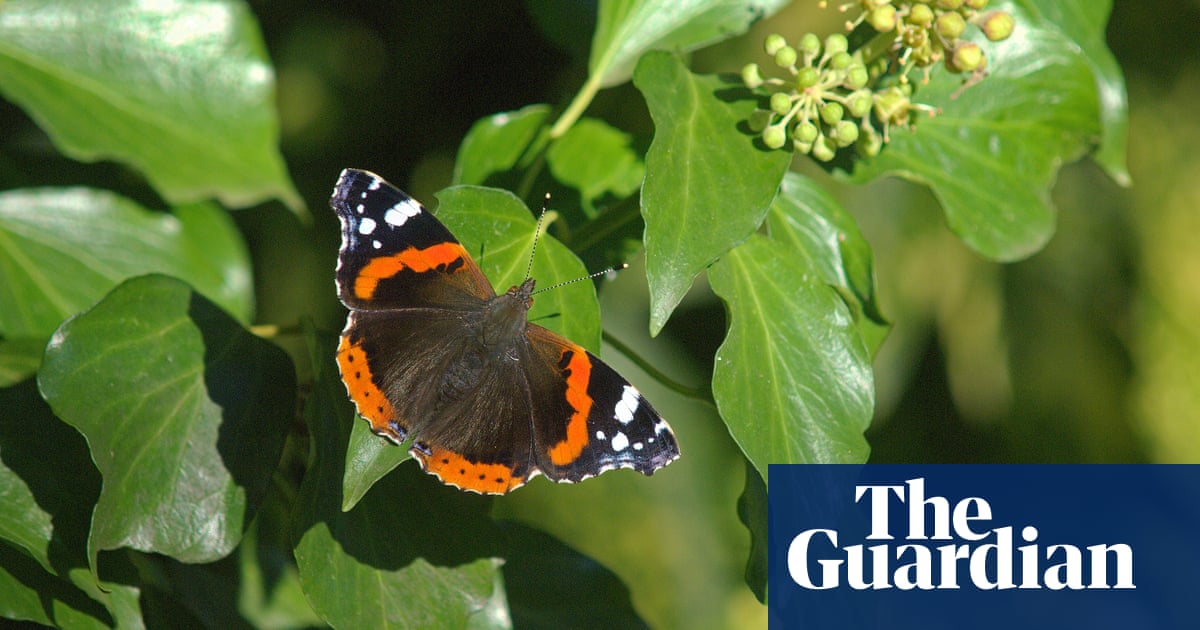
Scarlet flags unfurl and bees dance in revolutionary fervour. The flags are petals of an oriental poppy, Papaver orientale, in the Goliath group of species that may be called “Brilliant” or “Prince of Orange”. Depending on the intensity of light, it can flash through fiery red and sunset orange at the same time.
The oriental species comes from the Caucasus, Iran and Turkey, and has appeared in gardens for centuries. These flowers are an explosion – dangerous, erotic, visionary. Oriental Poppies, painted by Georgia O’Keeffe in 1928, was groundbreaking, not just for its intense colour but for the textures of the flowers and their sense of movement. Maybe it also speaks of opium and sex magic, but it is a mesmerising image.
It certainly has that effect on bees too. On this bright day in “flaming June”, after last night’s thunderstorm, the poppy flowers are full of garden bumblebees, Bombus hortorum, sometimes three or four in the same flower. Furry black-and-gold striped with white bums, the bees collide into the scarlet shimmer. Pulled by the visual lure of black patches inside the flower that give the illusion of dark, cavernous spaces, they crash into the rings of paddle-like stamens that carry a sable-purple pollen. These stamens skirt the curious seedhead structure with stigma of spidery, sticky-felt black arms, the diadem of the Mycenaean poppy goddess.
The bumblebees have individual, high-pitched whines, like a kind of alarm or a magical note. Their wings vibrate the stamens at a certain frequency until the pollen baskets attached to their legs are full. The bees pull out of the flower to return to the nest. The pollen is potent enough and the bees do not receive nectar from the poppy.
Like many bees, garden bumblebees have a cuckoo bee – an impostor species that steals the bee’s identity so that it can gain access to its nest to predate or exploit its colony. Bombus barbutellus looks very similar to Bombus hotorum, but has no pollen baskets on its legs; it steals from the labours of garden bumblebees. In the afternoon sun, the bees leave the poppies to their flames of riot and resurrection.












